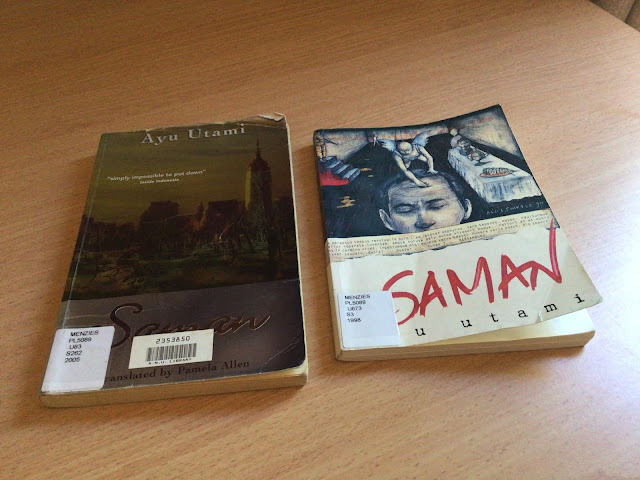All students have written an essay in their lives. Some enjoy the process, others find it futile. The former would most probably end up studying arts and humanities (or social sciences in general), while the latter most probably would end up in the engineering and science programs. As for me, I do like writing. But the process has not always been smooth. I don't have any problem with creative writing per se, but I do struggle with writing a research essay. Just for context, creative writing is something that you write based on what you know about the topics and you are not required to do prior research. Even if you do, you don't necessarily have to cite your sources. This is a completely different story for a research essay. Not only you are required to do prior research but also the quality of your essay often depends on how much research you do. In other words, the more sources you cite, the better your essay would become.
In this blog post, I would like to share my experience navigating my way around research essays. Luckily for me, doing research and writing have been my routine for the past one and a half year as I am currently doing graduate school.
As I reflect on my writing process, I now realise how little we are taught in school about essay writing. Often, teachers just instruct us to write the essay. But very rarely they walk us through the 101 of writing an essay. Honestly, I learn about everything I am about to share in this blog post by doing. So, hopefully, this will be helpful for you and for me, in case I forget about them in the future.
Here we go!
I always go through four steps when writing an essay: Brainstorming, Researching, Writing and Editing. Let's talk about them one by one.
Brainstorming
Whenever I start working on an essay, I always try to understand the question first. This is particularly important and is relevant regardless of your field, but more so if you study international relations in which the essay questions are often very vague. So, what I would do is that I would break down the question. For example, here is the essay question that I have to work on: "The Rising Power is Prone to Be Predatory During Power Transition!". As you can see, this is quite a chunky question. Rather than an answer, you are often left with more questions. Don't panic. That's actually quite normal. In fact, what you have to do next is to tend to those questions and try to digest them slowly. These are the questions that I have in mind about "the essay question".
"The Rising Power is Prone to Be Predatory During Power Transition!
- What is rising power?
- What is power transition?
- What Predatory rising power?
The terms used in this question may sound foreign to most people who don't study international relations (IR). But most IR students are familiar with them. If you already have preexisting knowledge about the question, then good. You can start vomiting your ideas into a piece of paper or you can also type them if you prepare typing than writing. Some people like to use mind map, that is good as well. Use whatever platform that works best for you. I would recommend everyone to rely on their preexisting knowledge first before jumping into the researching step. What I mean by that is that just write anything that you have in mind first, then use that as the first step in your essay writing. Afterwards, you can continue doing the research.
If you don't have any clue about the question, that is okay too. At least you have broken down the questions into smaller pieces, now you can start looking them up on google, google search or whatever sites you find helpful.
Researching
Writing
Here is a thing about writing, you don't have to worry about being right and grammatically correct the first time around. Just write whatever comes to your mind. You will lose a lot of energy and time if you worry too much about the wording and grammar. As long as you know what you write, just write. I don't know about you, but I am someone who relies on motivation to get me working. If I am in the mood, I feel like I have a very clear vision of what I am writing about. But if I am not in the mood, no matter how hard I try, I can't barely get anything out of my brain. So yes, when I am in the mood I try to vomit every single idea I have in my brain because I am worried that I may run out of it before I could get all the ideas out. I always feel like I am being timed to get it out. So, if the time is out, no matter how hard I try I won't be able to get it out.
Use A template
That is that. Another thing is, I find it quite helpful you have a template. All my essay always start with the same template.


























